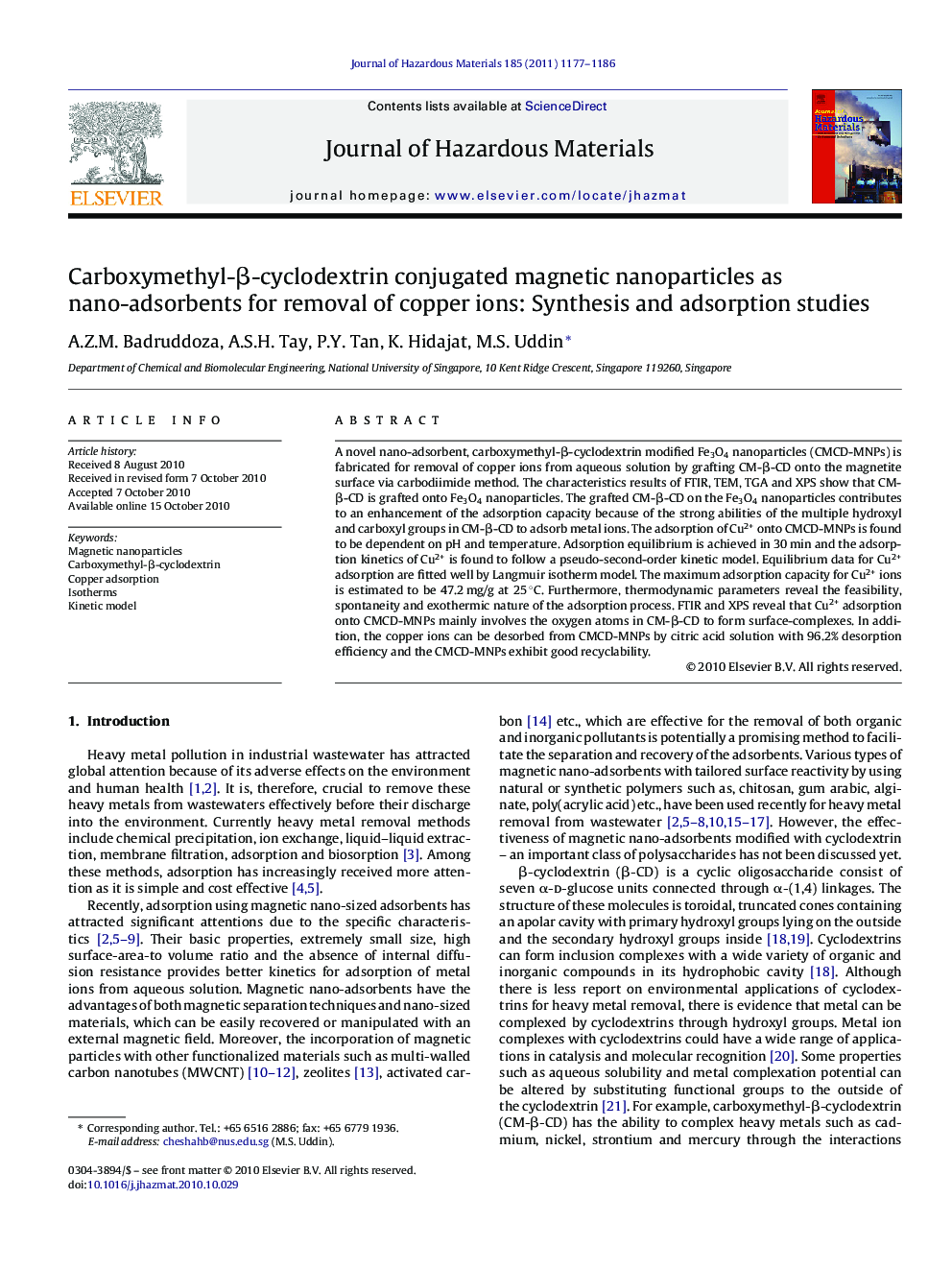| Article ID | Journal | Published Year | Pages | File Type |
|---|---|---|---|---|
| 579907 | Journal of Hazardous Materials | 2011 | 10 Pages |
Abstract
A novel nano-adsorbent, carboxymethyl-β-cyclodextrin modified Fe3O4 nanoparticles (CMCD-MNPs) is fabricated for removal of copper ions from aqueous solution by grafting CM-β-CD onto the magnetite surface via carbodiimide method. The characteristics results of FTIR, TEM, TGA and XPS show that CM-β-CD is grafted onto Fe3O4 nanoparticles. The grafted CM-β-CD on the Fe3O4 nanoparticles contributes to an enhancement of the adsorption capacity because of the strong abilities of the multiple hydroxyl and carboxyl groups in CM-β-CD to adsorb metal ions. The adsorption of Cu2+ onto CMCD-MNPs is found to be dependent on pH and temperature. Adsorption equilibrium is achieved in 30 min and the adsorption kinetics of Cu2+ is found to follow a pseudo-second-order kinetic model. Equilibrium data for Cu2+ adsorption are fitted well by Langmuir isotherm model. The maximum adsorption capacity for Cu2+ ions is estimated to be 47.2 mg/g at 25 °C. Furthermore, thermodynamic parameters reveal the feasibility, spontaneity and exothermic nature of the adsorption process. FTIR and XPS reveal that Cu2+ adsorption onto CMCD-MNPs mainly involves the oxygen atoms in CM-β-CD to form surface-complexes. In addition, the copper ions can be desorbed from CMCD-MNPs by citric acid solution with 96.2% desorption efficiency and the CMCD-MNPs exhibit good recyclability.
Related Topics
Physical Sciences and Engineering
Chemical Engineering
Chemical Health and Safety
Authors
A.Z.M. Badruddoza, A.S.H. Tay, P.Y. Tan, K. Hidajat, M.S. Uddin,
